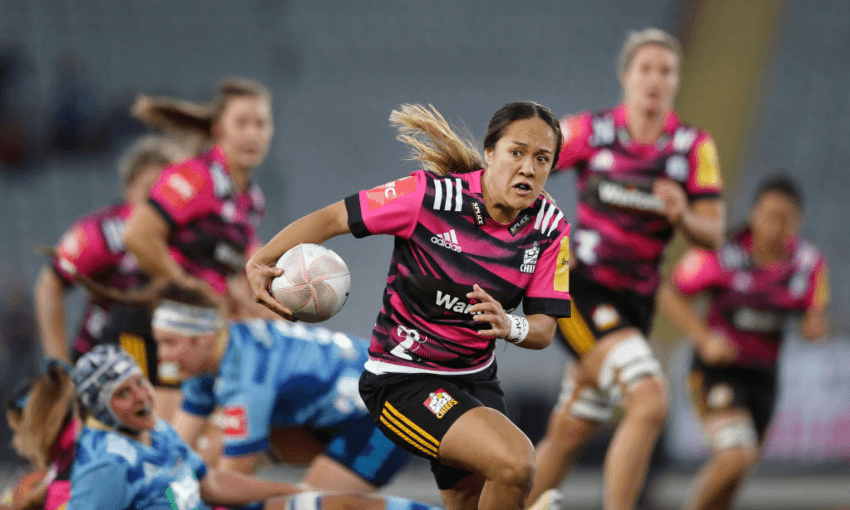Fresh from watching a dynamic, historic battle between the Blues and the Chiefs at Eden Park, Alice Soper says the moment has come to pay back all those who have been doing it for the love of rugby.
The first day of May 2021 marked a historical moment for women’s rugby while upholding a long standing tradition of spectacle. For the first time, the Blues and the Chiefs fielded women’s sides in a one-off match at Eden Park. In doing so, they provided a glimpse of what is possible for our sport, providing inspiration for young players and validation for those who have long championed the cause. But while this particular event, the setting, the teams, the jerseys, may have been new, allowing women’s participation in rugby in the form of exhibition matches is anything but.
It surprises many to learn that women have played rugby in this country as long as men. The earliest write-ups mention people of all ages, sizes and genders throwing the ball around. Women were first paid to play back in 1891, when an ill-fated crew was assembled to train and then tour the country as an attraction but ultimately fell over due to a fraud conviction before the first match could be played.
And then there were the exhibition matches. A routine fundraising effort for club and country during war time and a regular feature of the Queens Carnival in the 30s, 40s and 50s, these contests were observed with a mixture of curiosity and amusement. In my hometown of Wellington, women ran out on Athletic Park as entertainment between matches in 1915.
The trouble would come when women would try and turn these exhibitions into competitions. Like many who have fallen in love with the free running and physicality of this sport, the women wanted more than just an annual fixture. Governing bodies were happy to have women participate on their terms but unfortunately were not so keen to see them as athletes in their own right. Boards voted against fixtures and articles were published with doctors warning of the danger of “mannish girls”.
Thankfully, today, we will see no such articles published and our suitability for the sport will be left to those trolling in the comments section. What remains to be seen is whether we will encounter the same difficulty in transitioning exhibition into regular fixtures.
There are many rumours that a Super Rugby competition for women could be launched next year. It is widely believed that this will be a four-team competition with only one side from the South Island, likely the Crusaders, due to Canterbury’s dominance in the Farah Palmer Cup.
A Highlander omission would be a real shame given Otago’s importance in our modern women’s rugby history. The provincial competition’s namesake, Farah Palmer, played the majority of her rugby out of that region alongside many other stars of the 90s Black Ferns. The argument made will point to the smaller playing base to draw from but it must be asked why a mixture of local talent and relocations can’t be used in the same way it is for the men’s side. With a top university as a draw card, a creative partnership between the franchise and Otago University could see an attractive package put together for out of towners. It must be seriously considered. How can a southern playing base develop without a team to play for? It will only be made more difficult once the competition is launched and hungry young talent heads north to seek opportunity.
Whether four teams or five, the question of contracts is another yet to be answered. Women’s rugby was a vital part of the Silver Lake spin in recent weeks, the suggestion being that this competition’s viability was contingent on a cash injection. So forgive my eyeroll to hear the word “semi” so quickly added in front of the word “professionalism”. If the moral argument doesn’t persuade investment, the financial one must. One need only look at the growing rates of female participation and explosion of interest in women’s sport internationally to realise now is the time to invest.
Professionalism for our player base would be a game-changer, not just in the quality of rugby you will see on the field but the power we will gain off it. With rugby as a full-time profession not just a part-time obsession, we can continue to push for the change our sport so desperately needs. Whether that’s more diverse representation in our governing bodies, in coaching and broadcasting, welcoming a whole new audience or a more welcoming reception from the old boys down the club.
The time has come to pay back all those who have been doing it for the love of rugby. It’s time for rugby to love our wāhine back.





